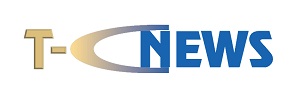I used to love watching Sesame Street as a kid. It was an American TV show with Muppet style puppets. Every episode had some major learning point for us kids but we loved the programme for its colour, fun and songs.
One of my favourite songs was the ABC song which ended. “Now I know my ABC, next time will you sing with me”
Now this song always reminds me of the ABCD of presentations. A really clever mnemonic to help you with the first few minutes of any presentation to get it off to the right start and give you lots of confidence to continue.
- A – Attention
- B – Benefits
- C – Credibility
- D – Direction
Attention
“Unaccustomed as I am to public speaking….”
“Hello, my name is Paul Archer…”
“Uhm, OK, lets get started then shall we?”
What do these three have in common? Yes of course they are bland, listless and terribly unexciting presentation starters.
Your first priority is to get the attention of your audience especially if you are selling and presenting at the same time. We don’t have the luxury of time, so we need to grab their attention in the first few moments.
Now it helps if you’ve done your circulating with the audience beforehand and have done some homework on the people sitting in front of you. This gives you some pointers as to the type of attention getter to use.
I’m not saying you should tell a joke. Perhaps you could but make sure it’s a self effacing joke to show your humility and not embarrass anyone sitting down.
- Share a quotation. You can get thousands of these from the Internet and one might fit the bill.
- Tell a story or metaphor which will link into the main points.
- Ask a searching question.
- A call to action
- This day in history. Log onto the History Channel’s website and sign up for the email a day service. It’s great and everyday gives you something that happened this day in history. You might be able to link this in.
Benefits
Once you have their attention, tease them with some of the main benefits or the major one benefit they will get from listening and maybe staking action.
It might be obvious to you, but we have to think of our audience. WIIFM. What’s in it for me? Think in their shoes and share some benefits.
“What I’d like to do is to give you some bang up to date pointers which will help you decide your direction over the next year. These could give you a competitive advantage.”
Enough to intrigue, excite and make people want to listen more.
Credibility
Important to get this part done, if the audience have never met you before. Sometimes, in more formal settings, the Master of Ceremonies will introduce you and help to build your credibility.
However in most business presentations, particularly sales pitches or “beauty parades” you really do have to cement your credibility. Don’t overdo this bit. Don’t fall into the trap of telling them all about you, your history, your qualifications.
That’s zzzzz time.
Instead use a reassurance statement. This statement should include your name and your experience both in the customer’s industry or sector and your experience in dealing with similar problems to your customer.
“My name is Paul Archer, I’ve been working with salespeople across the globe for almost 20 years helping them to earn their bonuses. For the last two years I’ve been helping businesses like yours get better closing ratios from their Key Accounts.”
Direction
At each junction the audience needs reminding where they’ve come from and then where they’re going to go next.
I love taking my three children on car journeys. My wife and I have a bet as to when the first one will ask “are we there yet Dad?” Normally my wife wins. So I reply “Not yet Euan, we’ve just passed Winchester and we’ll probably be at Nanas in half an hour.”
And they’re happy for the next few miles.
Now someone gave me a brilliant tip the other week to help in this arduous purpose. Keep telling them where you are and how long to go.
“Hey guys, we’ve just passed Stonehenge. Can you see it on your right? And we’ll be at Nanas in 20 minutes, in time for an ice cream”
Since that piece of advice we’ve never looked back and you can use the same idea in your presentations.
Tell your audience where you’re going to take them. Give them clear direction. Not an agenda. These are for books. Presentations need signposts which tell you where you’re going. At each junction the audience needs reminding where they’ve come from and then where they’re going to go next.
The best analogy is one of these property purchase programmes on the TV. My favourite is Phil and Kirsty doing “Location, Location, Location”. Just as they’re coming up to a commercial break, Kirsty will quickly recap the main points covered so far and one or two tempters of what you’ll see after the break. This not only gives you clear direction, but tempts you to come back after the break.
And when you return from the break, Phil takes over and reminds you what they did before the break and then tempts you further with the major benefits of the next 15 minutes.
Brilliant stuff and certainly worth repeating in your presentations.
So give direction and then constantly signpost your way to the end. And as you approach the end signal that the end is in sight, summarise each of your key points, remember the power of three – three major points maximum. Invite questions; never ever finish on a Q&A because if there are no questions, you’ll go out like a damp squid.
Invite questions, deal with these and then restate your aim and purpose and end with a call to action.
With the end in sight:
- Signal that the end is in sight
- Summarise each of your key points
- Invite questions: don’t end on Q&A
- Restate aim and overall purpose
- Definite finishes – call to action
And now you know your ABC…and D. Next time will you sing with me…




